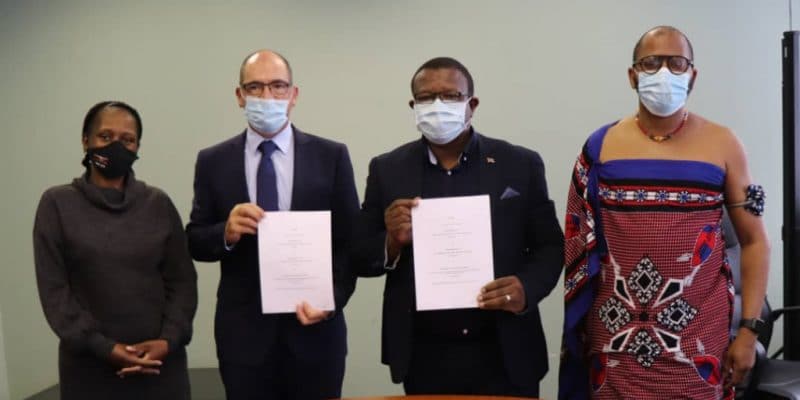Frazium Energy, a subsidiary of Frazer Solar, has signed a 40-year agreement with the Eswatini authorities to build a solar power plant with storage in the centre of the kingdom. The project will require an investment of $115 million.
A solar photovoltaic plant will be built in Eswatini. The project is now the subject of a 40-year agreement between the authorities of this southern African kingdom and Frazium Energy, the subsidiary of Frazer Solar, a company based in Berlin, Germany. The Eswatini government is providing the company with a 45-hectare plot of land in Edwaleni, in the Manzini region in the centre of the kingdom.
The Ministry of Commerce, Industry and Trade has today signed a Memorandum of Understanding with Frazium Energy, an Australian company which will soon set up the largest battery plant in Africa in Eswatini. pic.twitter.com/8wue9CaEXR
— Eswatini Government (@EswatiniGovern1) October 8, 2021
The Edwaleni plant will be equipped with 75,000 solar panels capable of delivering 100 MWp. The plant will also be connected to a battery storage system to provide electricity after sunset or during bad weather. Manqoba Khumalo, Eswatini’s Minister of Commerce, Industry and Trade, said the project is part of “our post-Covid-19 economic recovery plan. We are very pleased to sign this MoU, which shows the full alignment of all government ministries in launching this project.
Solar energy for the Southern African Power Pool
Frazium Energy will employ 100 people over the next few months to build the solar power plant, which will be operational in 2022. The electricity produced, 100 million kWh per year, will be fed into the Southern African Power Pool (SAPP). This is a cooperation between the national electricity companies of Southern Africa under the auspices of the Southern African Development Community (SADC). SAPP members have created a common electricity grid between their countries and a common electricity market in the SADC region.
Read also- ESWATINI: Globeleq and Sturdee to build two 30 MWp solar plants
SAPP interconnects the power grids of South Africa, Zambia, Zimbabwe, Tanzania, Namibia, Malawi, Mozambique, Lesotho, Botswana, Eswatini, Angola and the Democratic Republic of Congo (DRC). As part of the development of SAPP, the Inga III hydroelectric power plant, whose construction project is stalled, will be integrated into the Western Power Corridor (Westcor), linking the DRC, Angola, Namibia, Botswana and South Africa.
Jean Marie Takouleu







